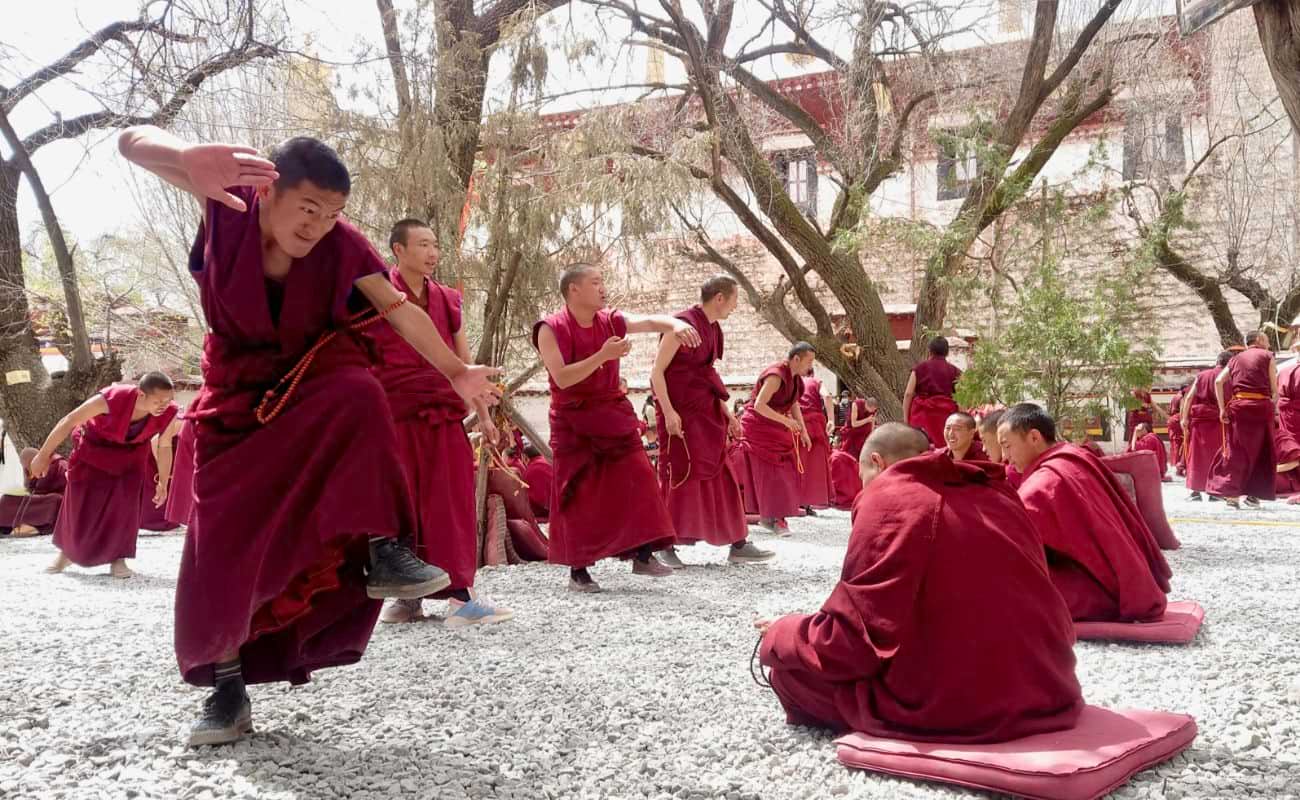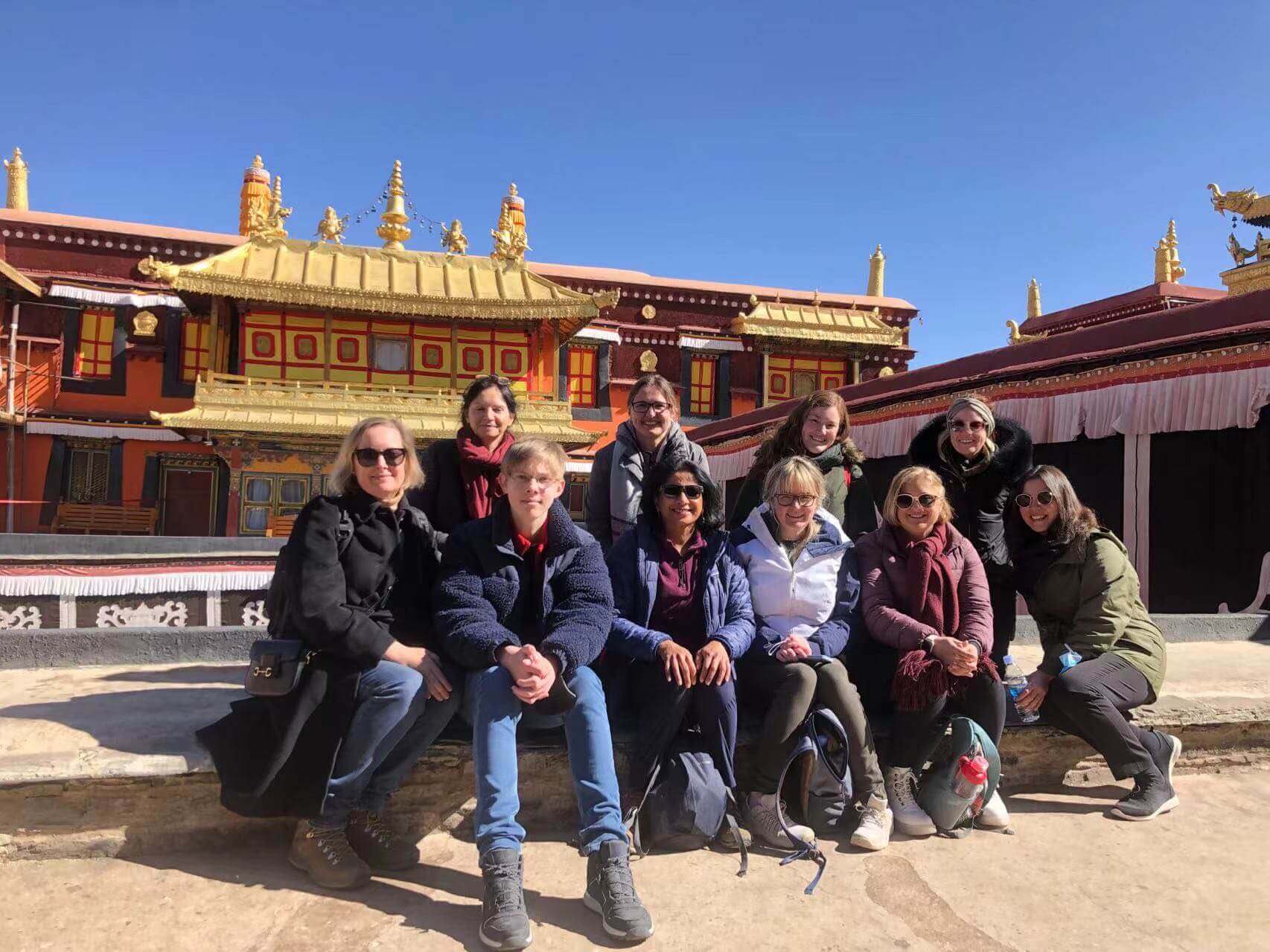The Tibet Lhasa Tour is a captivating journey to the heart of Tibetan culture, spirituality, and breathtaking landscapes. Whether you're drawn to the mystical allure of the Potala Palace, the serenity of Jokhang Temple, or the majestic beauty of the Himalayas, planning your trip at the right time is crucial. Knowing when to travel to Tibet Lhasa can significantly enhance your experience, allowing you to enjoy the best weather, festivals, and cultural insights.

In this comprehensive guide, we'll explore the ideal seasons, months, and even specific events to help you determine the best time for your Tibet Lhasa Tour.
Understanding the Climate of Lhasa
Before diving into the best months for your Tibet Lhasa Tour, it's essential to understand Lhasa's unique climate. Located at an altitude of 3,656 meters (12,000 feet), Lhasa experiences a high-altitude plateau climate. The weather can vary drastically, with intense sunlight during the day and chilly temperatures at night.
Spring (April to May): Spring marks the beginning of warmer weather in Lhasa, making it an excellent time to visit. The average temperature ranges from 7°C to 17°C (44°F to 63°F). The skies are usually clear, and the landscape is vibrant with blooming flowers and greenery.
Summer (June to August): Summer is the peak travel season in Lhasa, with temperatures ranging from 10°C to 23°C (50°F to 73°F). Although the monsoon season brings occasional rain, it’s generally mild and doesn’t hinder sightseeing. The warm weather makes this an ideal time for outdoor activities and exploring the region's natural beauty.
Autumn (September to October): Autumn is considered one of the best times to travel to Tibet Lhasa. The weather is stable, with temperatures ranging from 8°C to 20°C (46°F to 68°F). The skies are clear, offering stunning views of the surrounding mountains and landscapes. The harvest season also adds a touch of local charm to the region.
Winter (November to March): Winter in Lhasa is cold, with temperatures dropping to as low as -10°C (14°F). However, the dry climate means there's little snowfall, and the skies remain clear. While winter may not be the most popular time to visit, it’s an opportunity to experience Lhasa in a quieter, more intimate setting.
Spring: A Time of Renewal and Spirituality
If you're seeking a time when the weather is mild, the flowers are in bloom, and the city is alive with spiritual energy, spring is an excellent choice for your Tibet Lhasa Tour. The period from April to May is perfect for those who want to experience Lhasa without the crowds of the peak summer season.
Mild Weather: Spring offers comfortable temperatures, making it ideal for sightseeing. You can explore the Potala Palace, Norbulingka Palace, and other iconic landmarks without the intensity of the summer heat.
Buddha Shoton Festival: If you visit Lhasa in early May, you might be fortunate enough to witness the Buddha Shoton Festival, one of Tibet's most significant religious events. This festival marks the end of the monks' meditation retreat and involves massive Thangka displays, Tibetan opera performances, and vibrant festivities.
Trekking Opportunities: For adventure enthusiasts, spring is also a great time for trekking. The trails around Lhasa and the surrounding mountains are accessible, and the blooming rhododendrons add a splash of color to the landscape.
Summer: Embrace the Warmth and Festivities
For many travelers, summer is the ideal time to embark on a Tibet Lhasa Tour. The warm temperatures and longer days make it perfect for outdoor activities, exploration, and cultural experiences. June to August is the busiest period, but it's also the most vibrant time to visit.
Pleasant Weather: Summer temperatures in Lhasa are mild, making it easy to explore the city's numerous attractions. From the bustling Barkhor Street to the serene Sera Monastery, the weather allows for comfortable sightseeing.
Saga Dawa Festival: One of the most significant events during the summer is the Saga Dawa Festival, which falls in June. This month-long celebration commemorates the birth, enlightenment, and death of Buddha. Pilgrims from all over Tibet travel to Lhasa to participate in prayers, rituals, and offerings, creating an atmosphere of deep spirituality.
Outdoor Adventures: Summer is perfect for those who want to venture beyond Lhasa and explore the stunning landscapes of Tibet. You can trek to nearby monasteries, visit sacred lakes like Yamdrok, or even embark on a journey to the Everest Base Camp.

Monsoon Considerations: While Lhasa does experience some rainfall during the monsoon season, it’s generally light and doesn’t disrupt travel plans. However, it's a good idea to pack rain gear and be prepared for occasional showers.
Autumn: Clear Skies and Majestic Views
Autumn, from September to October, is often regarded as the best time to travel to Tibet Lhasa. The weather is stable, the skies are clear, and the region's natural beauty is at its peak. This season is perfect for both cultural exploration and outdoor adventures.
Ideal Weather: Autumn offers pleasant temperatures, making it one of the most comfortable seasons to visit. The clear skies provide breathtaking views of the Himalayas, including the distant peak of Mount Everest.
Harvest Festivals: Autumn is also the time of harvest in Tibet. During this season, you can witness various local festivals celebrating the abundance of the land. These festivals offer a glimpse into traditional Tibetan life, with dancing, singing, and communal feasts.
Photography Opportunities: If you're a photography enthusiast, autumn is the best time for capturing the stunning landscapes of Tibet. The vibrant colors of the harvest season, combined with the clear blue skies and snow-capped mountains, create picture-perfect scenes.
Fewer Crowds: While autumn is a popular time to visit, it’s not as crowded as the peak summer season. This allows you to enjoy the attractions and cultural experiences at a more relaxed pace.
Winter: A Quiet and Intimate Experience
Winter in Lhasa is often overlooked by travelers due to the cold temperatures, but it’s a hidden gem for those seeking a peaceful and authentic experience. From November to March, Lhasa is quieter, and the prices for accommodations and tours are lower.
Clear Skies: Despite the cold, winter in Lhasa is characterized by clear skies and plenty of sunshine. The crisp air and snow-covered landscapes offer a different perspective of Tibet’s beauty.
Pilgrimage Season: Winter is the pilgrimage season in Tibet, and you’ll find local Tibetans flocking to Lhasa’s temples and monasteries. This is a unique opportunity to witness the deep spiritual devotion of the Tibetan people without the influx of tourists.
Budget-Friendly Travel: Winter is the off-season for tourism in Lhasa, which means lower prices for flights, hotels, and tours. If you’re looking to experience Lhasa on a budget, winter might be the best time for your Tibet Lhasa Tour.
Peaceful Atmosphere: The absence of large crowds during the winter months allows for a more intimate experience of Lhasa’s spiritual and cultural sites. You can explore Jokhang Temple, Drepung Monastery, and other sacred sites in a serene and tranquil setting.
Festivals to Enhance Your Tibet Lhasa Tour
No matter what time of year you choose to travel to Tibet Lhasa, the region’s festivals can add an extra layer of cultural richness to your journey. Tibet is known for its vibrant and spiritual festivals, many of which are tied to Buddhist traditions.
Losar (Tibetan New Year): Celebrated in late January or February, Losar is the most important festival in Tibet. It marks the beginning of the Tibetan calendar year with religious rituals, feasting, dancing, and traditional performances. Visiting Lhasa during Losar offers a unique opportunity to experience Tibetan culture at its most joyous.
Butter Lamp Festival: Held on the 15th day of the first Tibetan month, the Butter Lamp Festival is a stunning display of butter sculptures and lamps. Pilgrims light thousands of butter lamps to commemorate the victory of light over darkness, creating a magical and spiritual atmosphere in Lhasa.
Ganden Thangka Festival: This festival, held in August, features the unveiling of a giant Thangka (Buddhist painting) at Ganden Monastery. Pilgrims and tourists alike gather to witness this sacred event, making it a memorable highlight of any Tibet Lhasa Tour.
Conclusion: Choosing the Best Time for Your Tibet Lhasa Tour
The best time to visit Lhasa depends on your preferences, budget, and the type of experience you’re seeking. If you prefer warm weather and lively festivals, summer might be the ideal season for your Tibet Lhasa Tour. For those who appreciate clear skies and majestic views, autumn is unbeatable. Spring offers mild weather and spiritual events, while winter provides a peaceful, budget-friendly escape.
Ultimately, traveling to Tibet Lhasa is a journey of a lifetime, no matter the season. With its rich history, spiritual significance, and awe-inspiring landscapes, Lhasa will leave an indelible mark on your soul. Choose the time that best aligns with your travel goals, and prepare to embark on an unforgettable adventure.




Comments